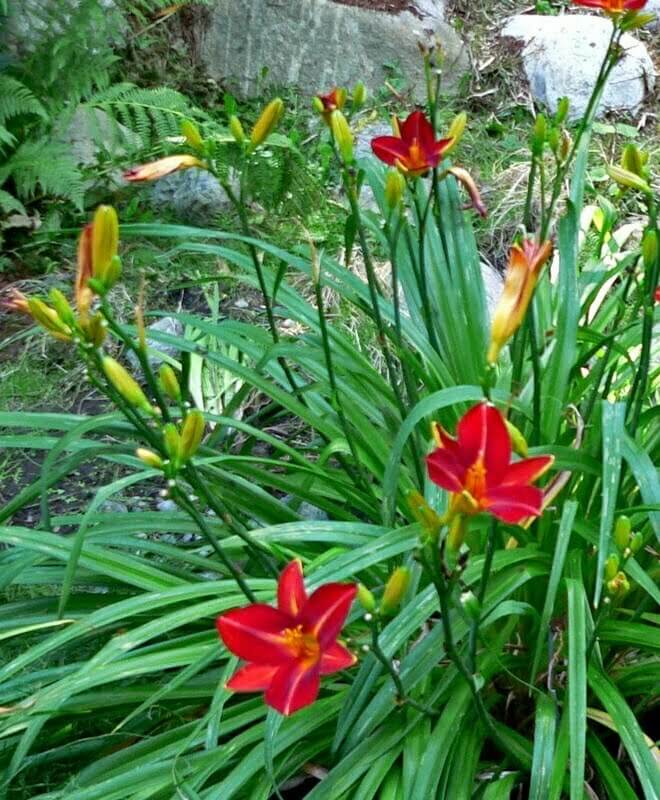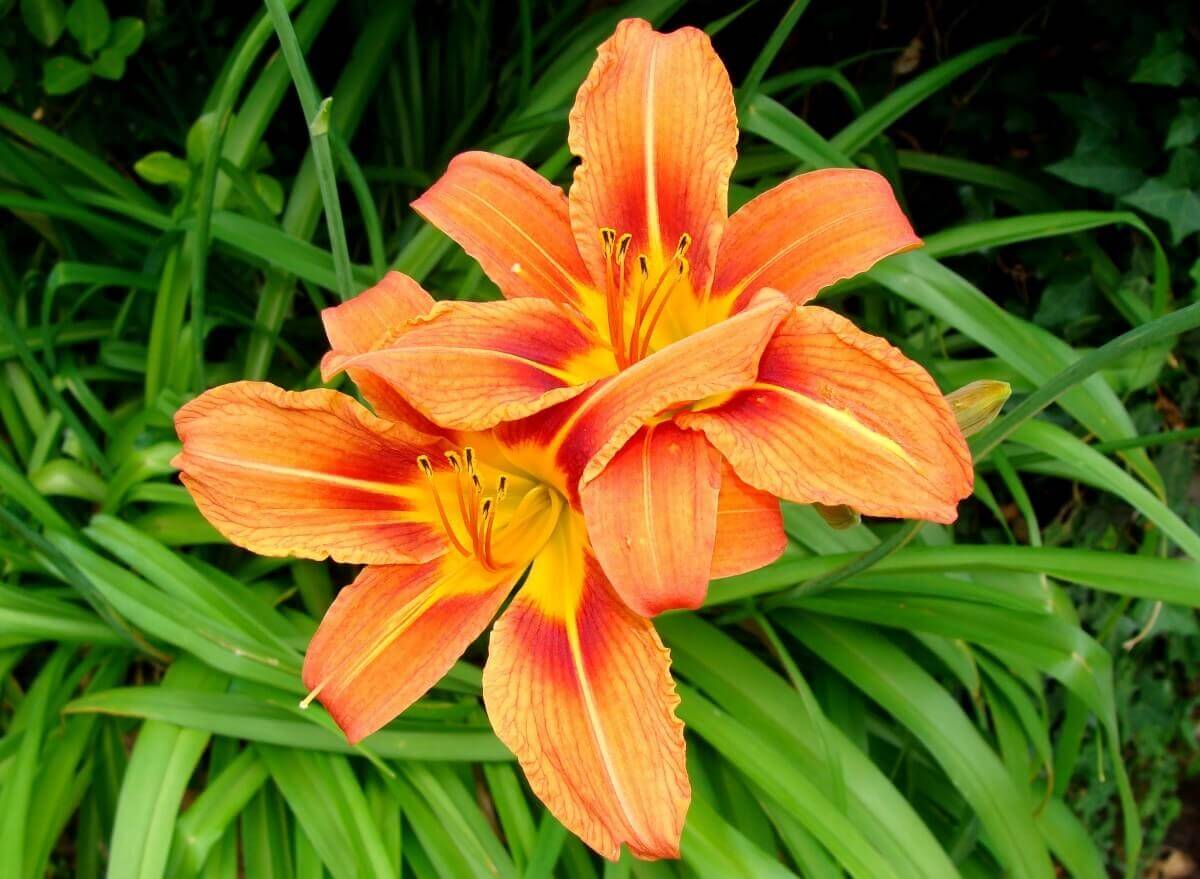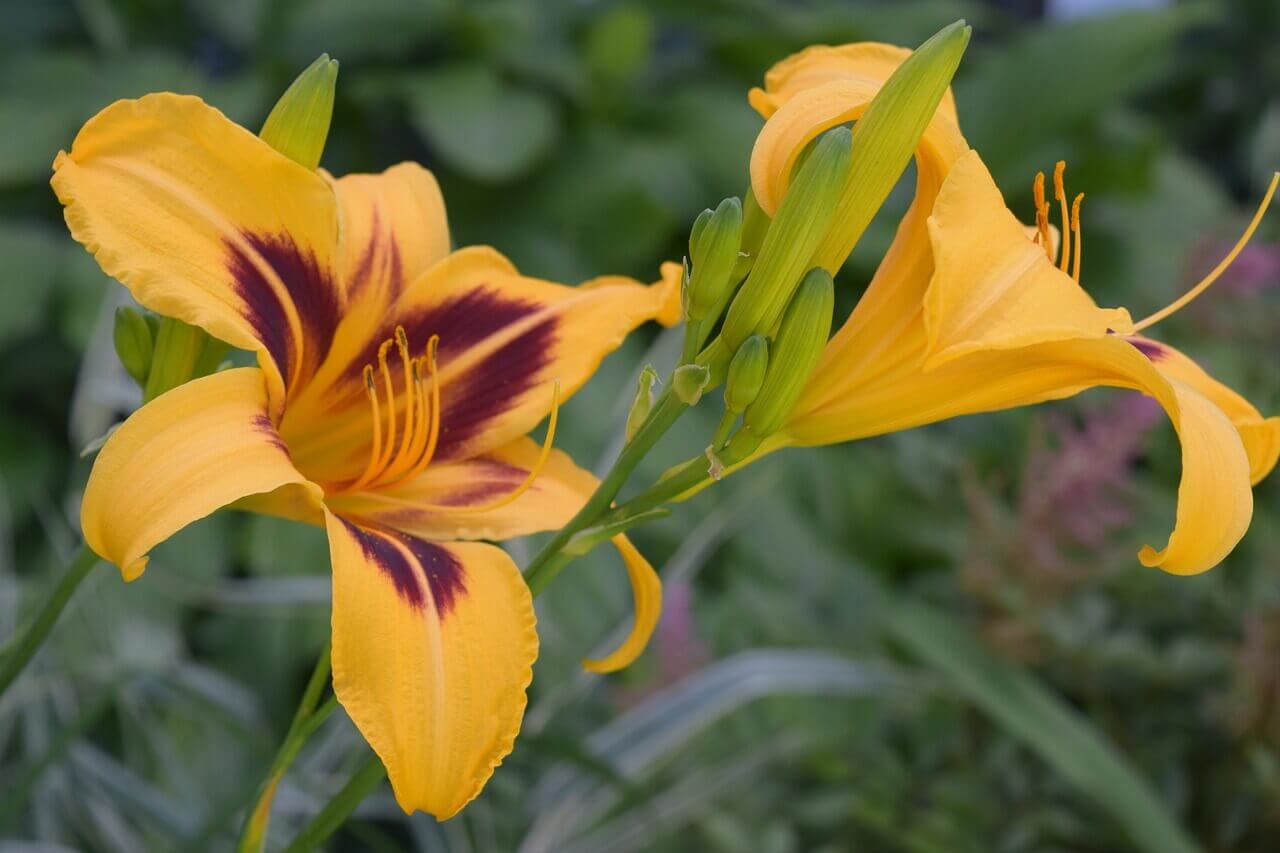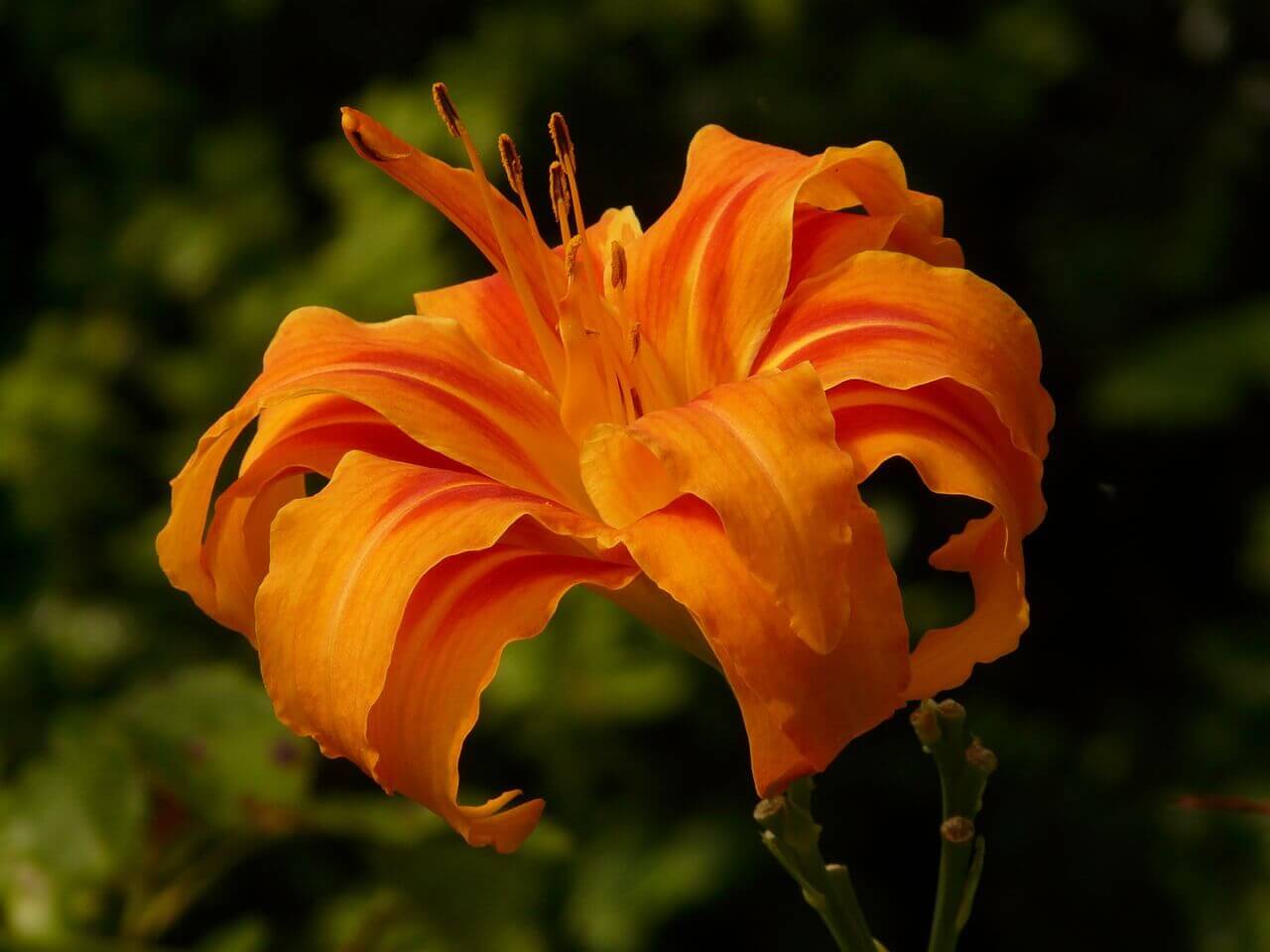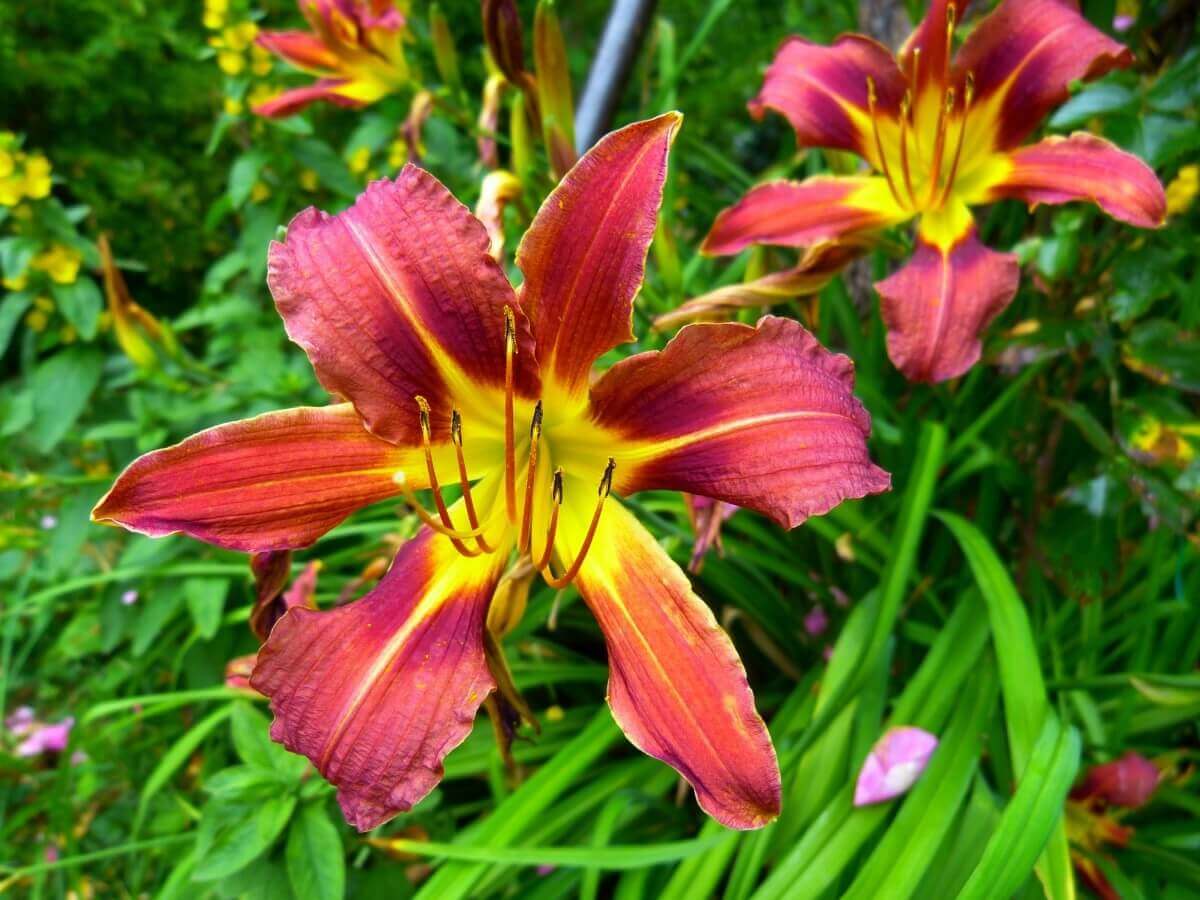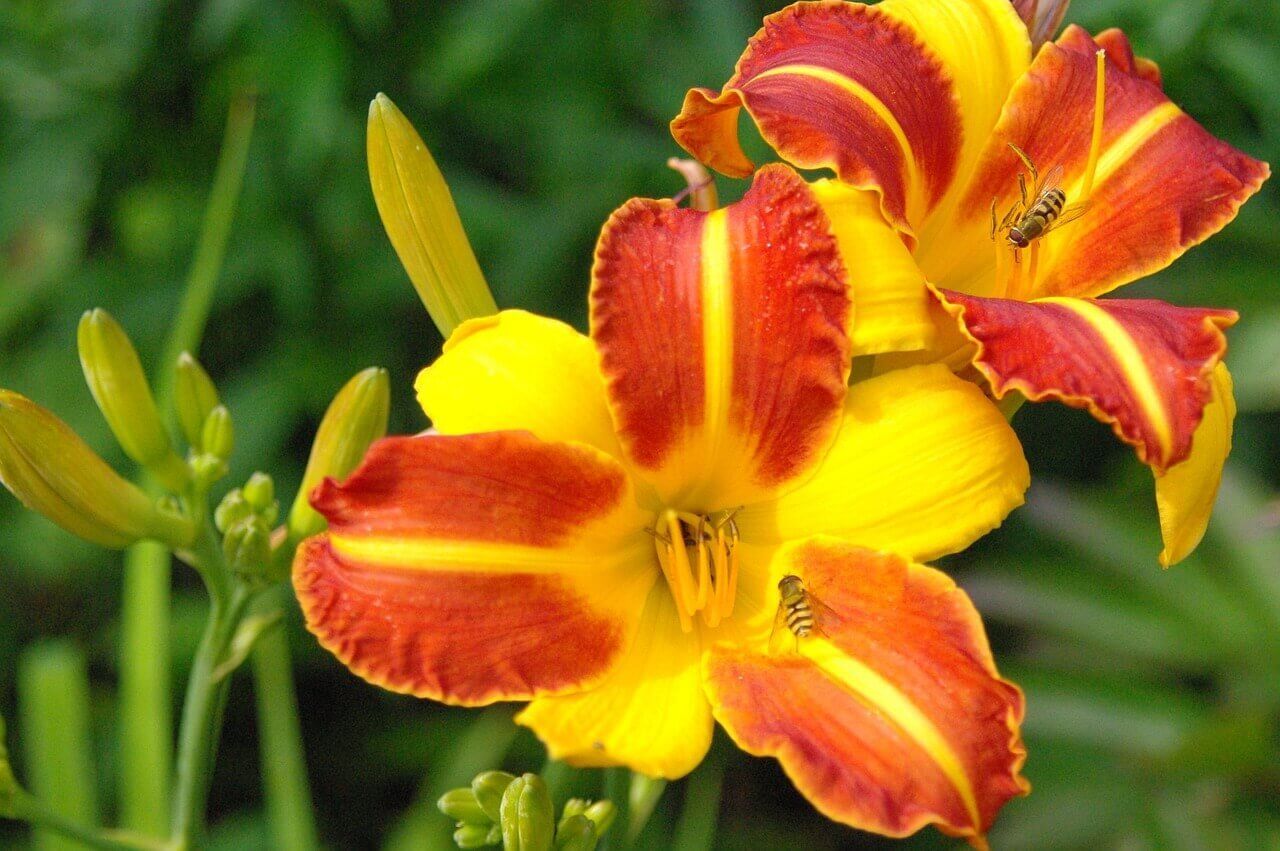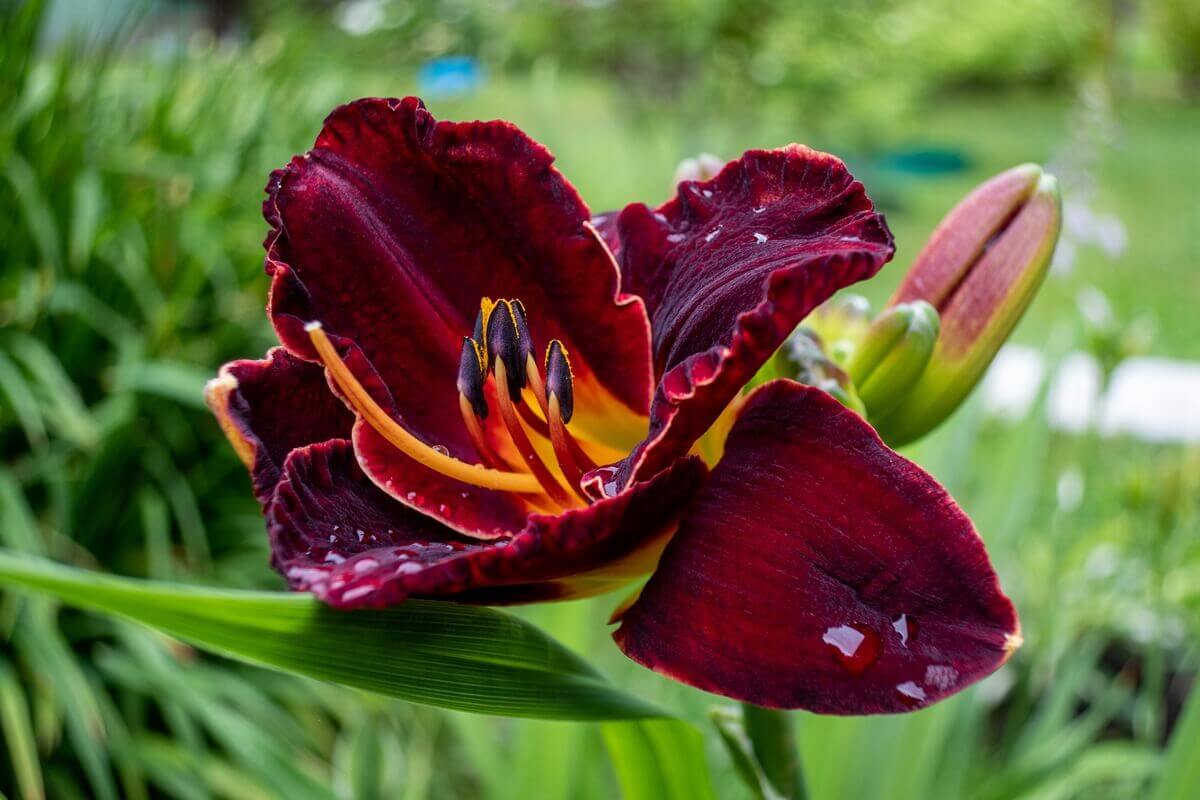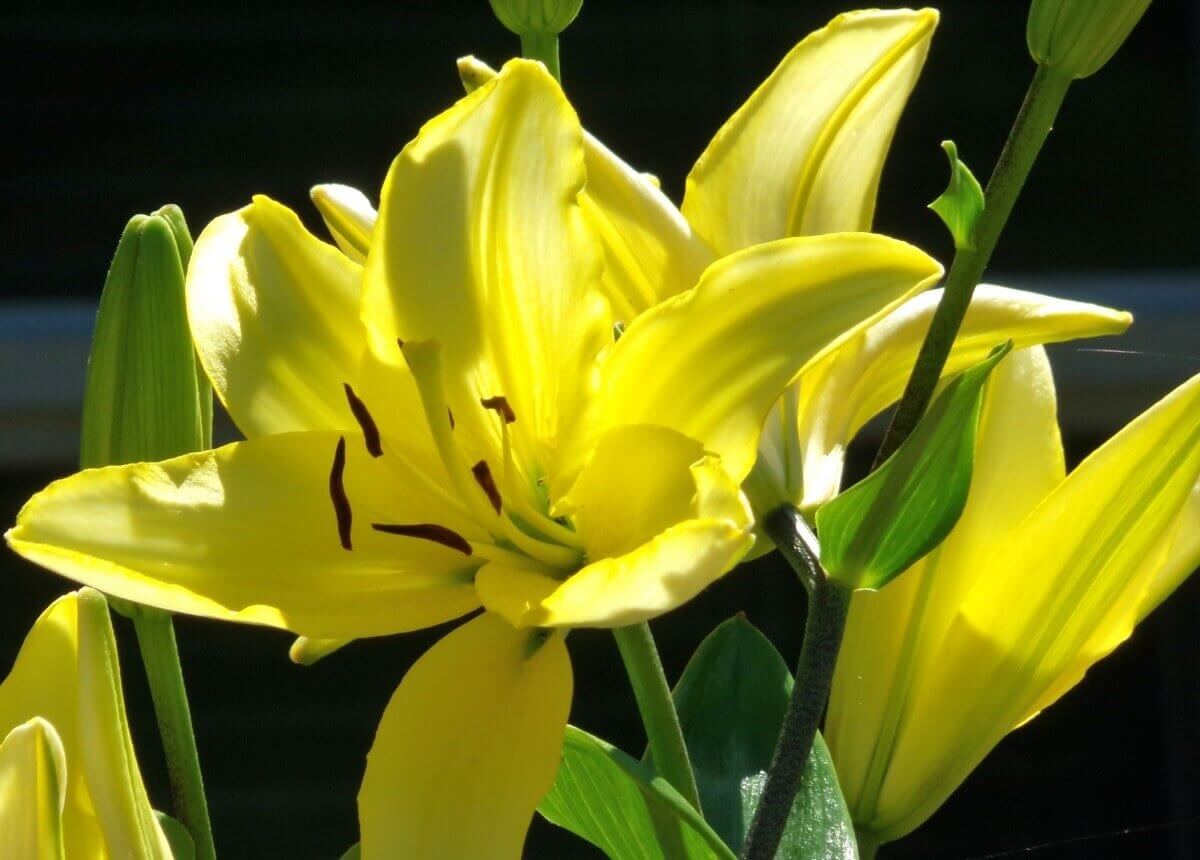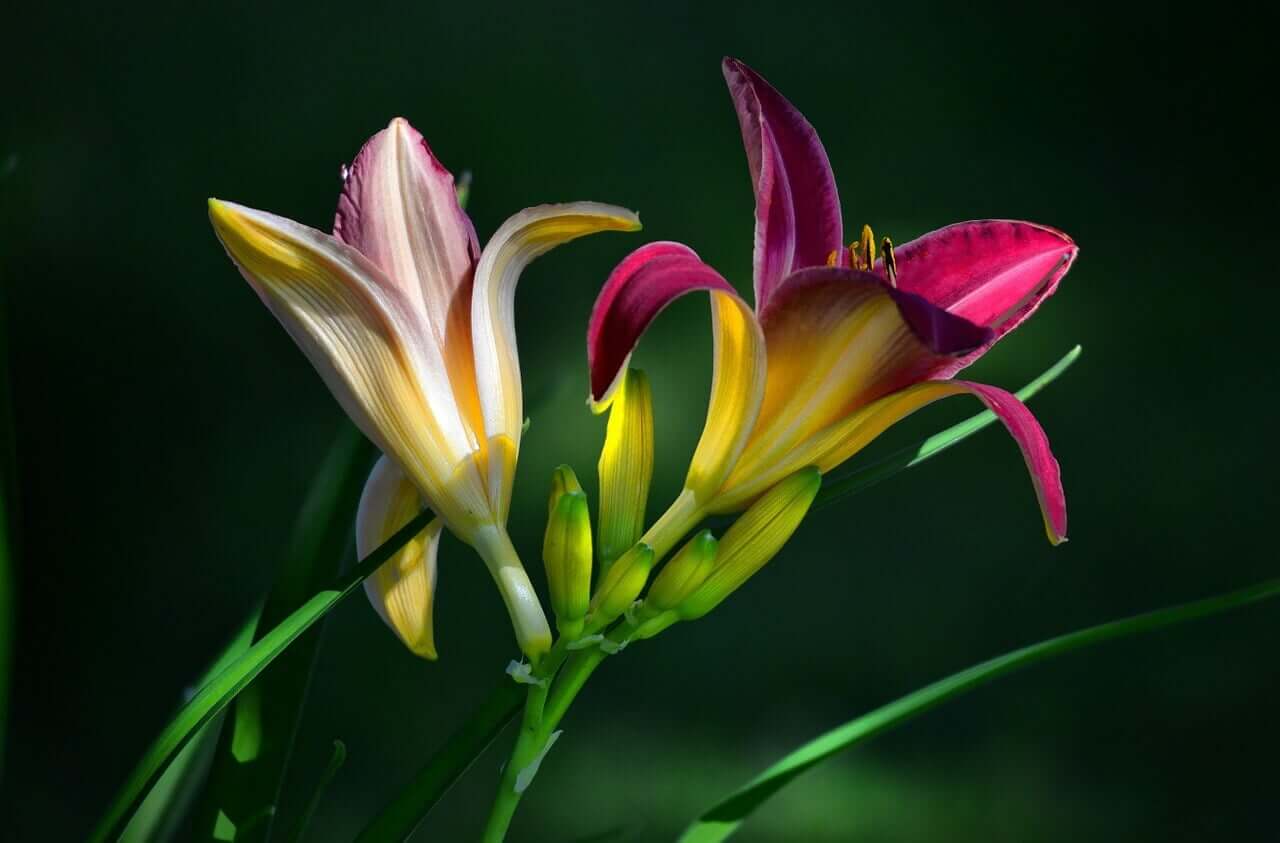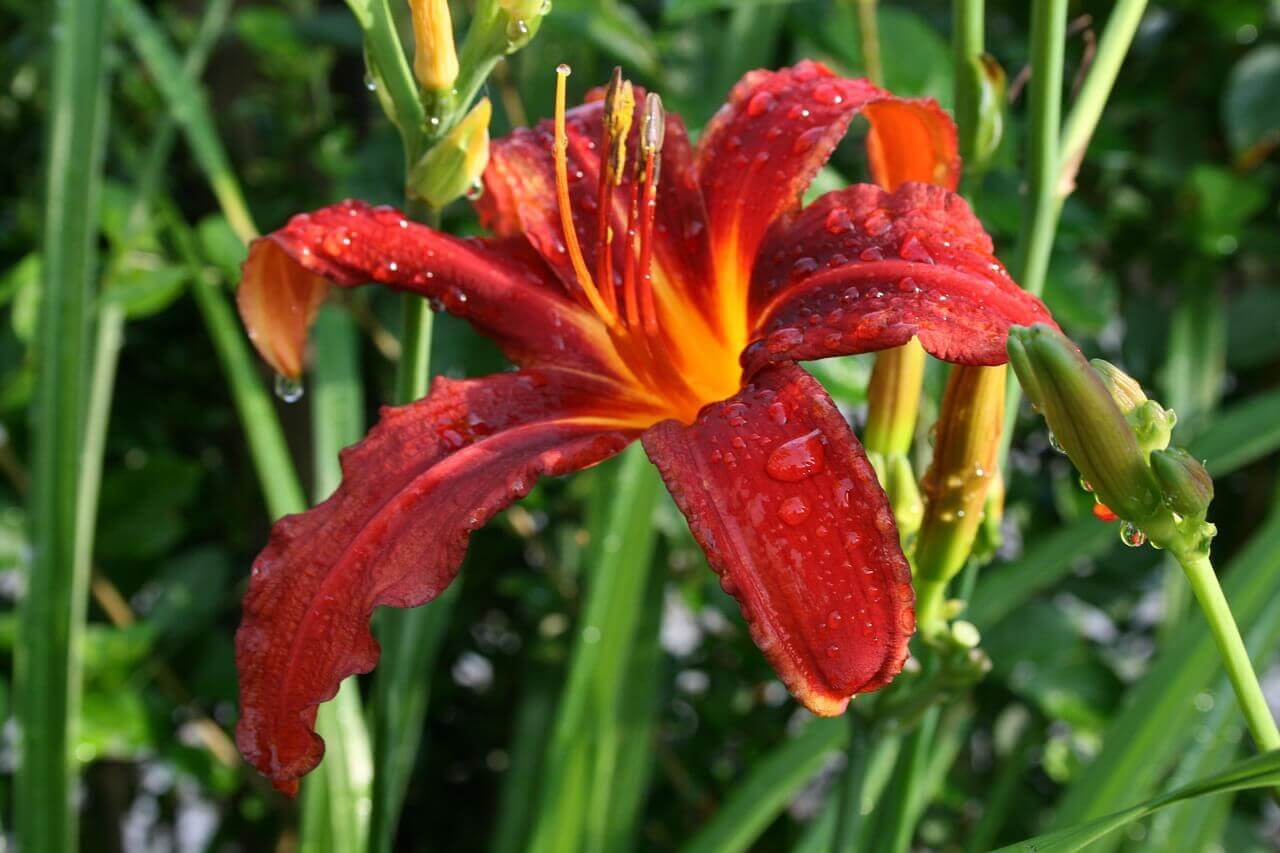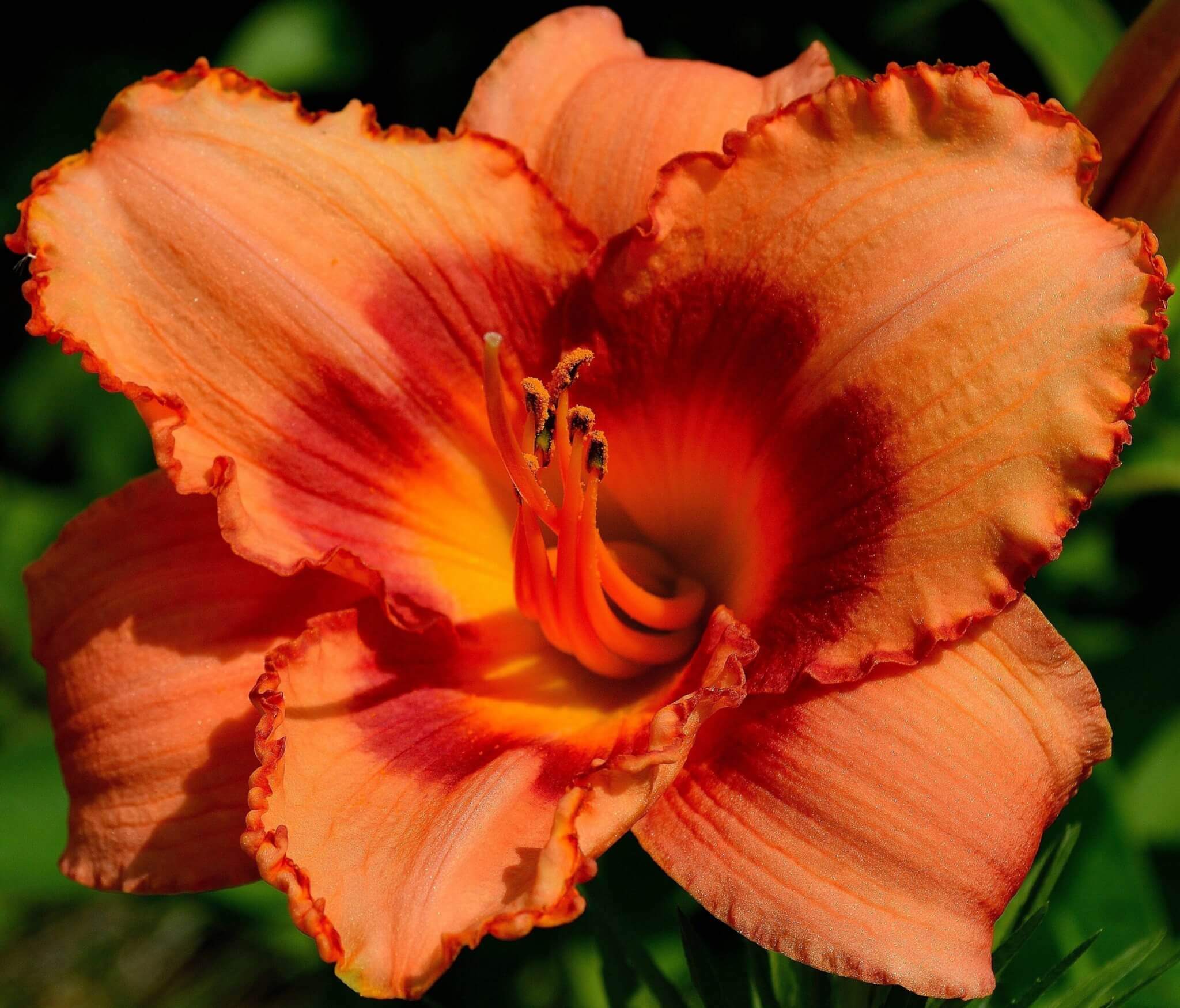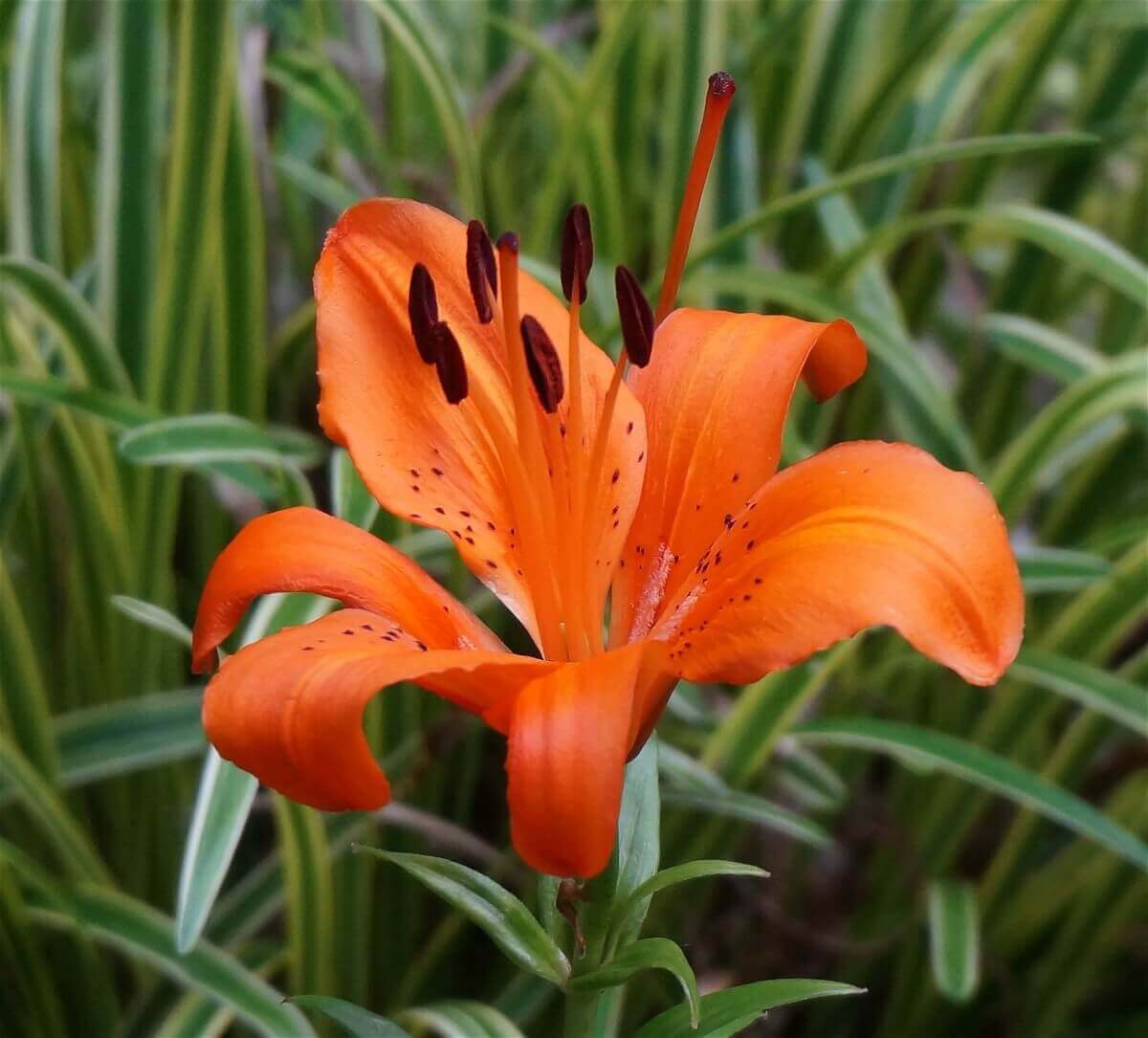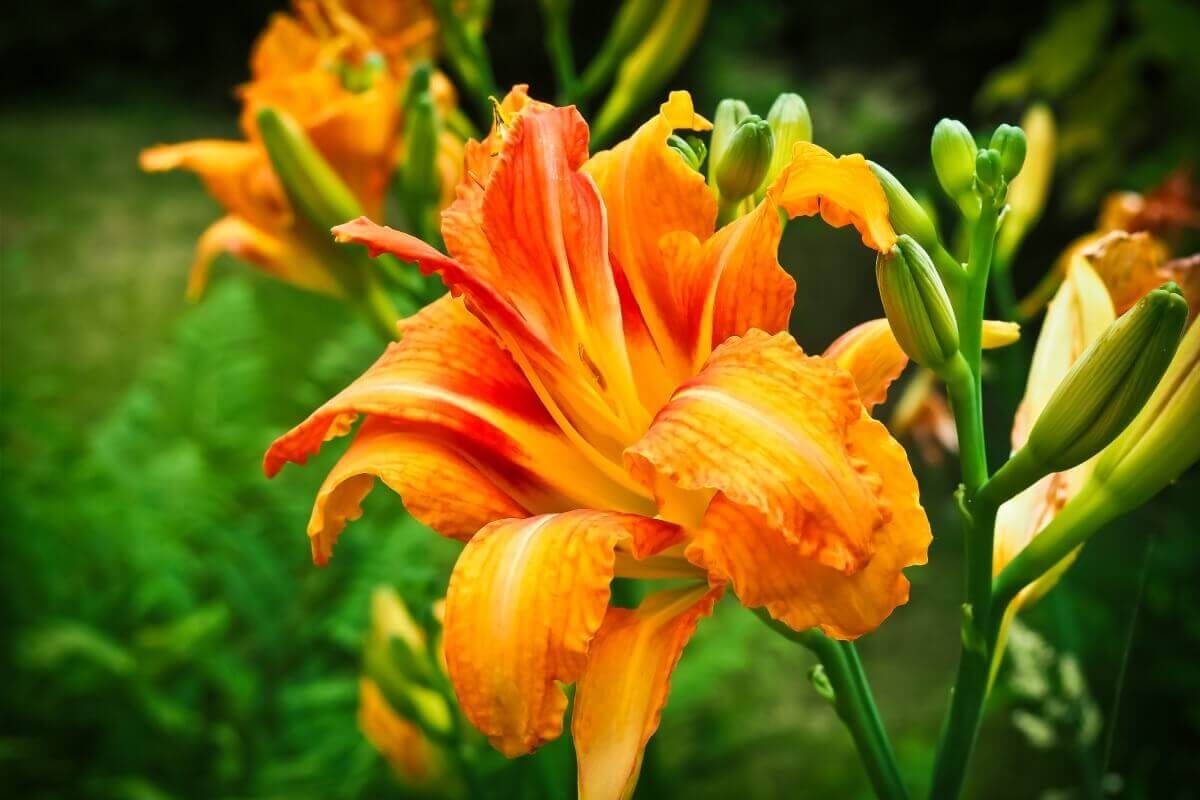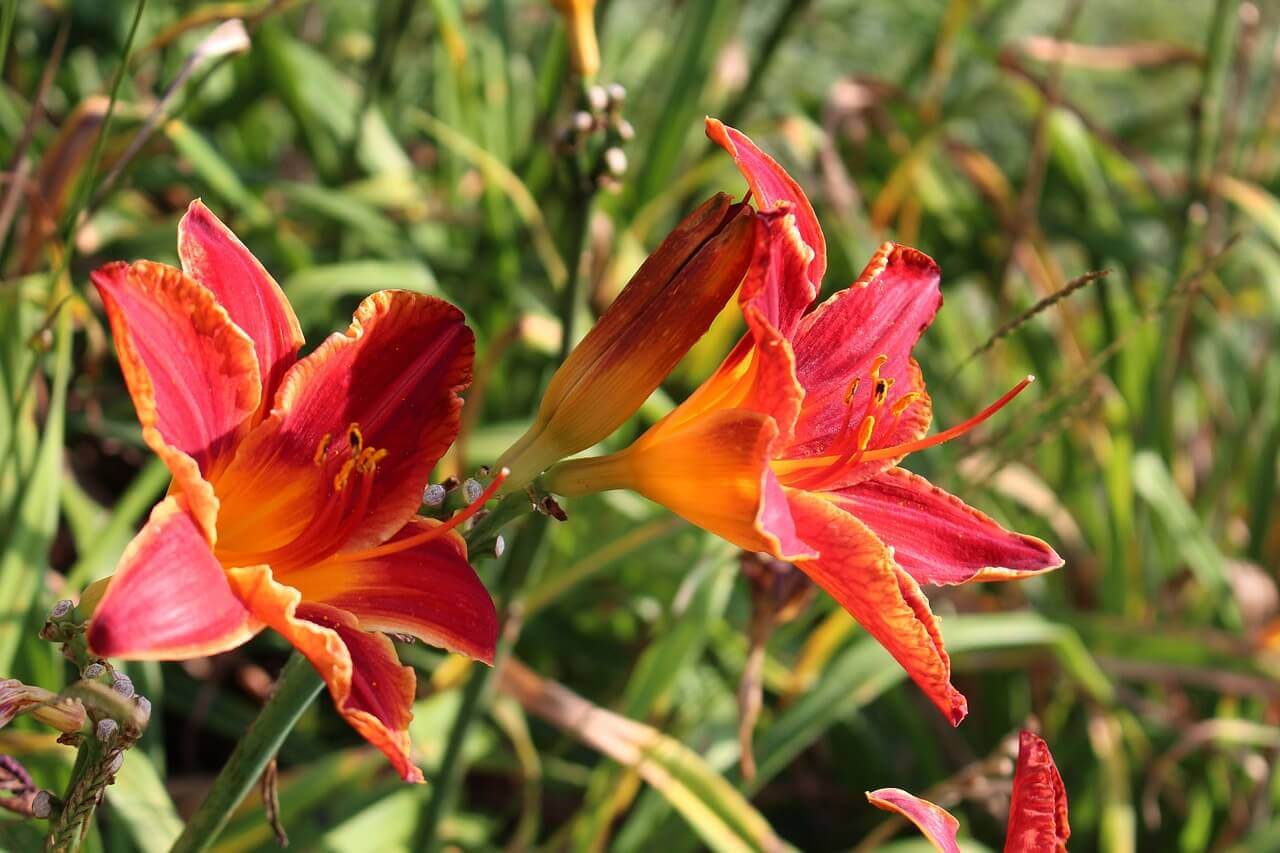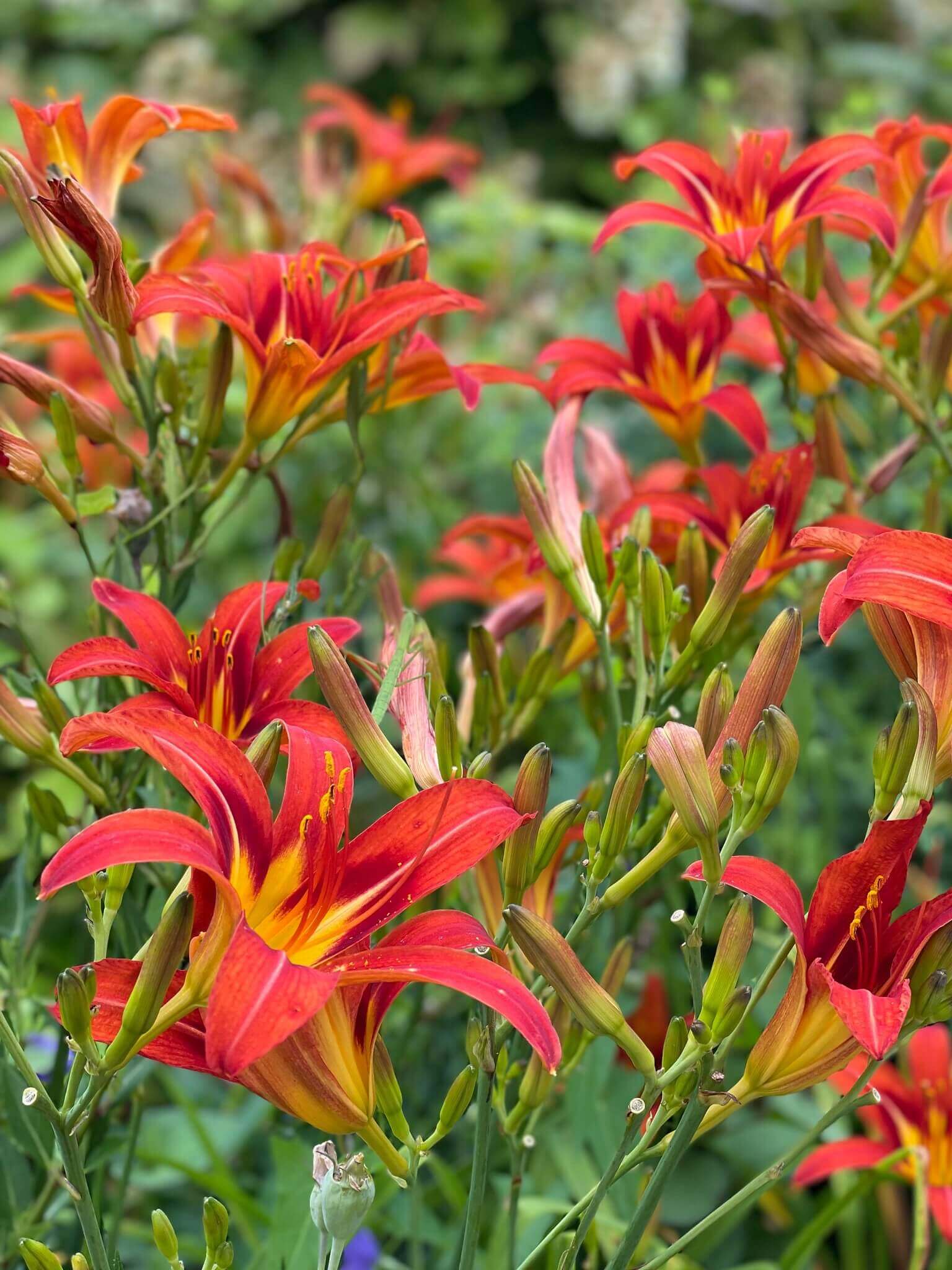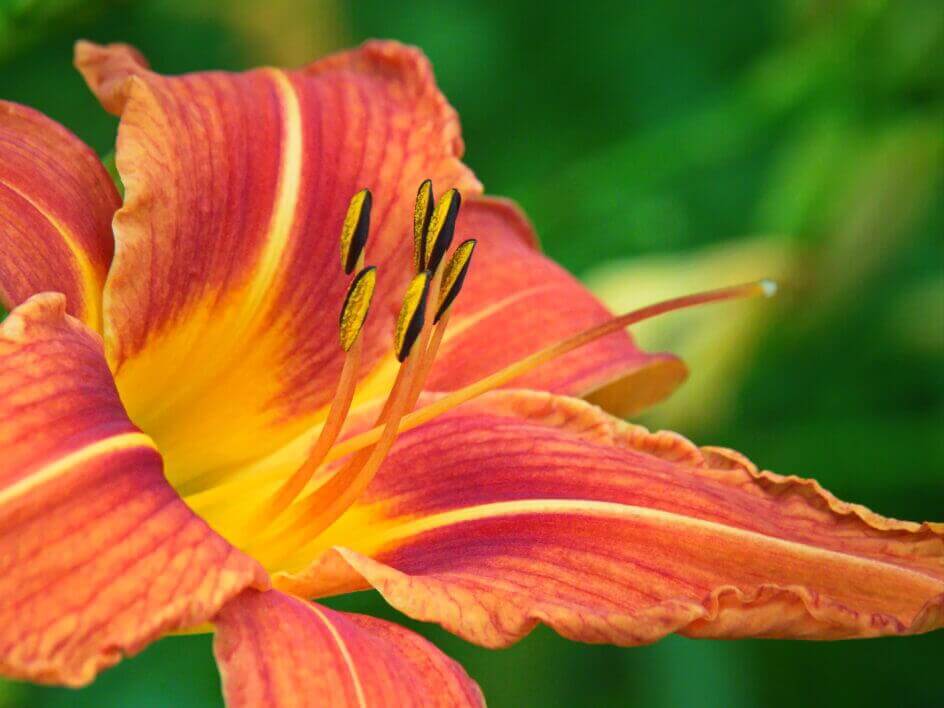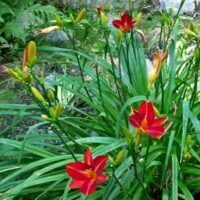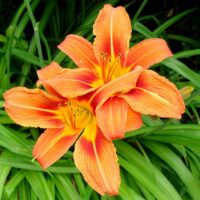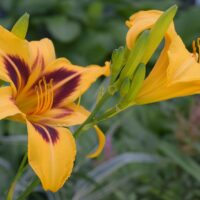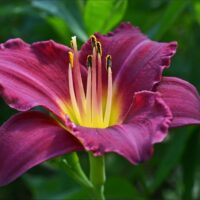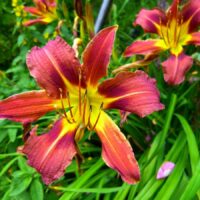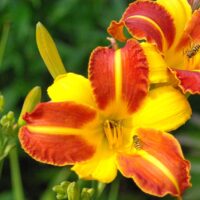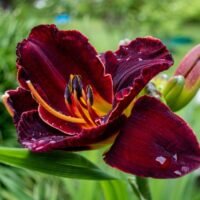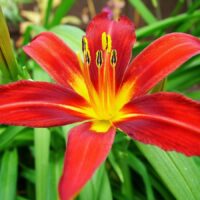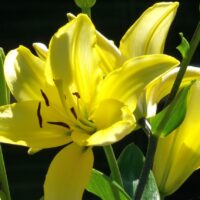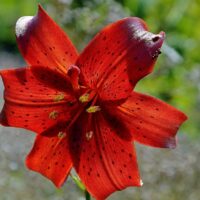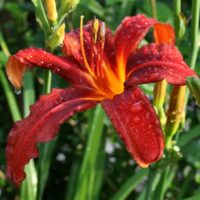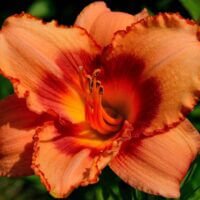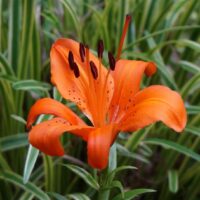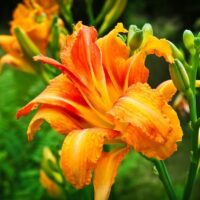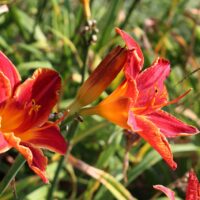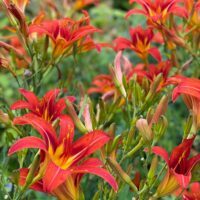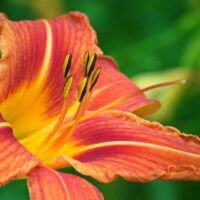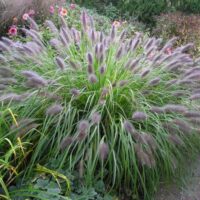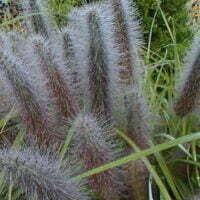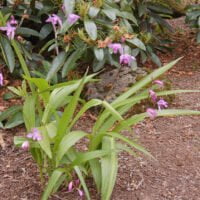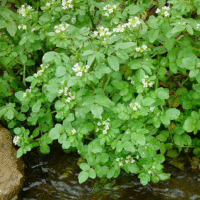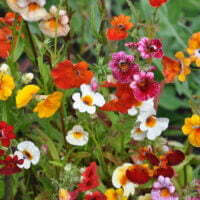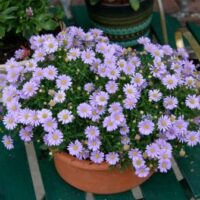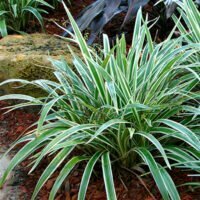| Botanical name | Hemerocallis species |
|---|---|
| Plant Care |  Full Sun Full Sun – Prefers 6 or more hours of sun per day.  Half Sun Half Sun – Prefers 3 To 6 Hours of Sunlight a Day. Frost Hardy Frost Hardy – Can Handle frost without damage. |
| Categories | |
| Flowers | January February March April August September October November December These plants has attractive blooms that are similar to lily flowers and most species open at sunrise and wither during the foll |
| Common name(s) | Daylily |
| Foliage | The long, narrow lanceolate leaves are grouped into opposite fans with arching leaves. |
| Soil conditions | This plant grows in fertile, moist, well-drained soil. |
| Interesting info | Edible flower |
| Propagation | Propagation is usually by division. |
| Common pests and diseases | Slugs and snails often badly disfigure the foliage. Rust disease is a problem in some areas. |
Hemerocallis species (Daylily)
- Botanical name: Hemerocallis species
- Common name(s): Daylily
- Categories: Ground Covers and Perennials
Plant description:
These plants has attractive blooms that are similar to lily flowers and most species open at sunrise and wither during the following night, to be replaced by another one (sometimes two or none) on the same stem the next day. They bloom in early spring, while other wait until the summer or even fall. The long, narrow clumps of grassy or iris-like leaves are grouped into opposite fans with arching leaves.
Family: Hemerocallidaceae
Synonym: –
Botanical Pronunciation: –
Hemerocallis species requirements and features
info on these icons
Moderate Maintenance
Requires moderate maintenance.
Prohibited Use Notice: No Data Scraping Allowed Except for Search Engine Indexing:
The content provided on PlantInfo.co.za is intended for personal, non-commercial use only. Unauthorized extraction, reproduction, or use of the data, including scraping, for any purpose other than search engine indexing is strictly prohibited. Violations of these terms may result in legal action. By accessing and using this website, you agree to comply with these conditions and acknowledge the legal restrictions on the use of our content.
January February March April August September October November December These plants has attractive blooms that are similar to lily flowers and most species open at sunrise and wither during the following night, to be replaced by another one (sometimes two or none) on the same stem the next day. They bloom in early spring, while other wait until the summer or even fall. 
The long, narrow lanceolate leaves are grouped into opposite fans with arching leaves.


